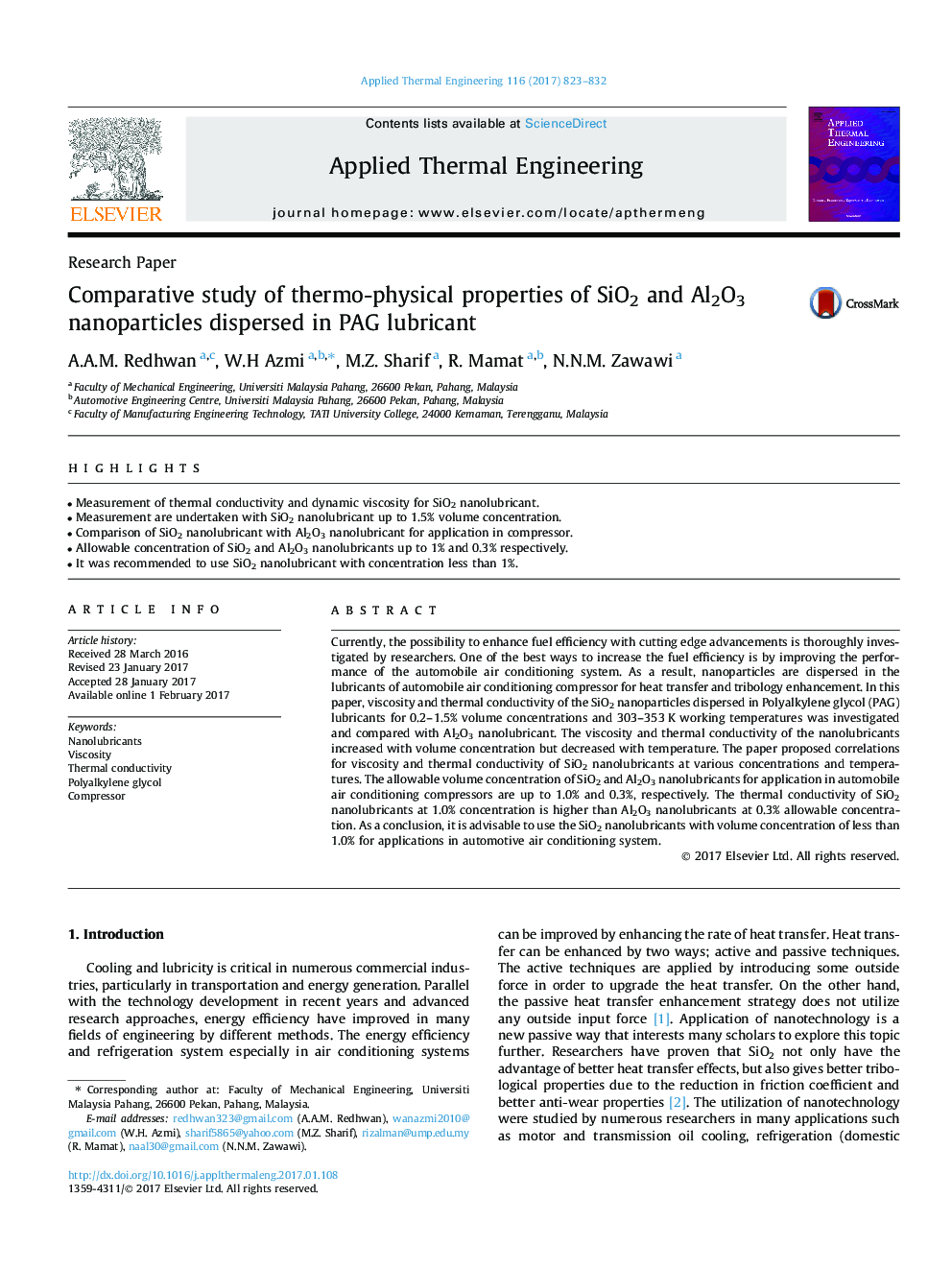| Article ID | Journal | Published Year | Pages | File Type |
|---|---|---|---|---|
| 4991484 | Applied Thermal Engineering | 2017 | 10 Pages |
Abstract
Currently, the possibility to enhance fuel efficiency with cutting edge advancements is thoroughly investigated by researchers. One of the best ways to increase the fuel efficiency is by improving the performance of the automobile air conditioning system. As a result, nanoparticles are dispersed in the lubricants of automobile air conditioning compressor for heat transfer and tribology enhancement. In this paper, viscosity and thermal conductivity of the SiO2 nanoparticles dispersed in Polyalkylene glycol (PAG) lubricants for 0.2-1.5% volume concentrations and 303-353Â K working temperatures was investigated and compared with Al2O3 nanolubricant. The viscosity and thermal conductivity of the nanolubricants increased with volume concentration but decreased with temperature. The paper proposed correlations for viscosity and thermal conductivity of SiO2 nanolubricants at various concentrations and temperatures. The allowable volume concentration of SiO2 and Al2O3 nanolubricants for application in automobile air conditioning compressors are up to 1.0% and 0.3%, respectively. The thermal conductivity of SiO2 nanolubricants at 1.0% concentration is higher than Al2O3 nanolubricants at 0.3% allowable concentration. As a conclusion, it is advisable to use the SiO2 nanolubricants with volume concentration of less than 1.0% for applications in automotive air conditioning system.
Related Topics
Physical Sciences and Engineering
Chemical Engineering
Fluid Flow and Transfer Processes
Authors
A.A.M. Redhwan, W.H Azmi, M.Z. Sharif, R. Mamat, N.N.M. Zawawi,
